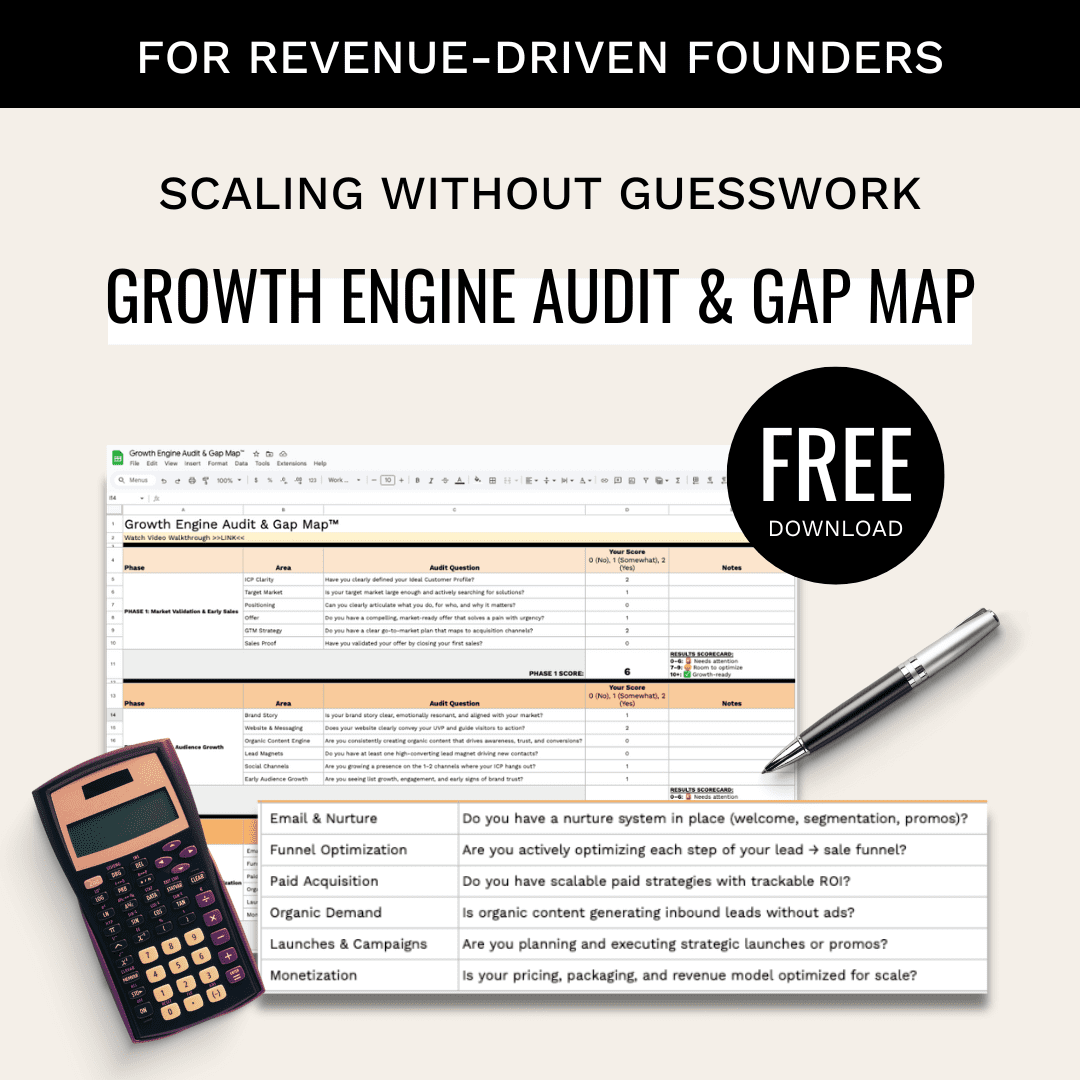For data professionals who are looking to work in marketing data science, knowing marketing mix modeling algorithms, variables and methods is non-negotiable. That’s why we are dedicating this blog to introducing the algorithms and variables you’ll want to use to implement the marketing mix modeling (MMM) approach.

Now, if you aren’t quite sure what MMM is exactly, I recommend you first start by going back and reviewing last week’s blog post here: Marketing Mix Modeling Explained.
I first learned about marketing mix modeling while gathering a client testimonial from Kam Lee. For the record, the “mixture” of Kam’s marketing data science expertise and the startup strategies he learned from within my course, led him to hit $350k in his first year or so of business!

The 4 Most-Common Features for MMM
The 4 most-common features measured within a marketing mix model are:
- Product
- Place
- Promotion
- Price
If this is your first exposure to these variables, just know that these are the “4Ps of marketing”. They’re household staples for product marketers, and they’re actually quite useful as features in MMM. We’ll use them as part of the “marketing mix” in the discussion that follows.
What is Marketing Mix Modeling?
Again, if you aren’t quite sure what MMM is exactly, I recommend you go back and review last week’s blog post on Marketing Mix Modeling Explained.
Marketing Mix Modeling TL;DR Version
Basically, for MMM, you want to take those 4 Ps and evaluate how that mixture of marketing attributes directly impacts profitability. The model you’d use to make that prediction (or set of predictions) is what’s commonly referred to as a “marketing mix model”.
And marketing mix modeling? That’s simply the act of taking historical sales and marketing data, and using statistical methods to build a model from that data in order to uncover statistically (and economically) significant relationships between your marketing mix and sales.
Once you’ve ascertained those relationships, you’ll be able to predict future sales and tweak your company’s marketing plans accordingly.
What’s the Catch? – Inserting 4 Ps into Marketing Mix Modeling Algorithms
The thing is though, you can’t just plug the 4 Ps into marketing mix modeling algorithms and be done with it.
First you need to know which are the best marketing mix modeling algorithms, and then you need to understand how the 4 Ps behave, as well as what to choose for explanatory and response variables for a MMM model. Let’s take a look….
 Marketing Mix Modeling Algorithms
Marketing Mix Modeling Algorithms
In all honesty, there aren’t that many marketing mix algorithms out there. The most common approaches include multiple linear regression and Bayesian methods.
Multiple Linear Regression
The most common type of machine learning algorithm that’s used in MMM is multiple linear regression. If you’re not proficient with multiple linear regression, feel free to peruse the following training and coding demonstrations:
On the Data-Mania Blog
- A 5-Step Checklist for Multiple Linear Regression
- A Demo of Hierarchical, Moderated, Multiple Regression Analysis in R
Our Courses / Books
- Multiple Linear Regression – in Python for Data Science @ LinkedIn Learning
- Chapter 4: Math, Probability, and Statistical Modeling – in Data Science for Dummies with Wiley & Sons Publishers
Bayesian Methods
There are some limitations to using multiple linear regression for MMM. For example, if you’re working with sparse data, you’re at risk of model-overfitting if you use regression. Also, as you’re about to see in our discussion of MMM variables, there is quite a bit of dependency between variables that go into a marketing mix. Since that dependence defies model assumptions for multiple linear regression, you may be forced to take another approach.
In these cases, you can try out Bayesian statistics to model your marketing mix. The advantage of taking a Bayesian approach is that it allows you to interject your domain expertise to guide the model in the most logical direction. If you’d like to learn more using Bayesian modeling for MMM, I suggest you read this article here.
As always with machine learning, predictive success is directly correlated with how well you understand the data you’re modeling. With that, let’s turn to the variables you’d use in MMM and how those variables behave.
The Response Variables Are Pretty Obvious…
Since you are using MMM to predict and optimize profits, the main response variables you’d want to consider are:
- Number of Sales
- Sales Revenue ($)
Explanatory Variables for Modeling the 4 Ps
Let’s do a quick overview of what explanatory variables would be appropriate to represent each of the variables in a MMM model.
Product
This refers to the product that is being sold.
How Product data behaves
Factors that impact how the product variable behaves include product quality, ease-of-use (ie; “usability”), and buyer expectations vs customer satisfaction. Basically – if your product sucks, then it doesn’t matter how you price or promote it – your buyers aren’t going to be happy, sales will falter, and selling it will eventually tarnish your company’s brand.
If you’re selling services, you could technically use a “service package” as the product here. In that case, you’ll probably want to extend out to a 7Ps approach: By adding variables that represent process, people, and physical evidence.
Explanatory variables you can use to represent Product in your MMM
MMM variables you can use to model Product in your mix include (in order of decreasing impact on total sales):
- Product quality
- in terms of constituency – % of a desirable attribute
- when it comes to “durability” – product life span in days
- in terms of conformance to manufacturing requirements – risk priority number
- Product newness (days on the market)
Price
The price variable is simply the price at which the product sells.
How the Price variable behaves
There are lots of different pricing strategies out there, but the main thing to remember here is that you don’t want to be in a race to the bottom.
The price should reflect the value that the product provides its buyer, as well as how much supply there is to meet its demand…
Instead of lowering prices, look for ways to increase the value of the product and improve your marketing messaging to enhance the product’s positioning.
Generally, as prices increase, sales volumes decrease – so your distribution numbers (as represented by “place” variables) would decrease, but you could end up getting an increase in sales revenues anyway…. That’s one of the reasons it’s important to include both price and distribution in the marketing mix.
Also, when you drop prices you tend to get more sales, but the buyers are generally higher maintenance customers – this actually erodes the profitability of the product, because you’ll get more customers that all tend to require more support services which will have to be paid for out of the operations budget.. In this case your distribution numbers (as represented by “place” variables) could go up, but your price would be down and the overall profitability of this product for your company would suffer.
Obviously, this is something you’ll want to avoid…
If all this talk on how price impacts product marketing has you scratching your head, I recommend you check out this video blog here: Omnichannel Analytics and Channel Scoring for MORE SALES AND LOWER CHURN

Explanatory variables you can use to represent Price in your MMM
MMM variables you can use to model Price in your mix include (in order of decreasing impact on total sales) :
- Unit Cost ($)
- Spending/Customer ($/PP)
- Product Discount ($)
Place
With respect to the place variable, we’re really talking about the place where the sale was made and the product is distributed to its buyer.
How the Place variable behaves
If you have a digital business, then “place” would be equivalent to the sales channel.
So if you have a digital business, then “place” would pretty much be equivalent to the sales channel.
If you don’t know what I mean by “sales channel”, make sure to checkout this video blog here: Omnichannel Analytics and Channel Scoring for MORE SALES AND LOWER CHURN
But if you’re in retail and have a brick-and-mortar store, along with an ecommerce store… place would designate the actual location where the sales and product distributions are made.
Explanatory variables you can use to represent Place in your MMM
MMM variables you can use to model Place in your mix include (in order of decreasing impact on total sales) :
- Distribution Volume – How widely is the product being distributed?
Distribution per unit time
- In terms of “Distribution” – Number of units purchased total
- In terms of “Distribution” – Number of units purchased per location
Promotion
Promotion technically refers to how your company makes potential customers aware that the product is available.
How Promotion data behaves
Promotion often includes things like organic marketing, paid ads, press releases, and how your brand appears in search engine results. Promotion is the vehicle by which these tactics are communicated to customers in order to produce an increase in sales.
There are other approaches to building MMMs, and these involve extending out your marketing mix to include additional features. Well, this is the simplest. Let’s go with it…
Explanatory variables you can use to represent Place in your MMM
MMM variables you can use to model Promotion in your mix include all activities that increase product awareness and sales. Some examples are as follows (in order of decreasing impact on total sales) :
- Number of promotions
- Cost per promotion ($)
- TV ads spend ($) – traditional
- Print ads spend ($) – traditional
- Outdoor campaign spends – traditional
- Facebook and Instagram ad spend ($) – new, digital
- Website traffic volumes – new, digital
- Paid search spend ($) – new, digital
Closing Thoughts on Learning How to Implement MMM
As far as books, a lot of stuff out there is for non-technical marketing people. It’s not that helpful for actually learning how to do machine learning implementation of marketing mix modeling. In fact, from what I’ve seen online, bloggers tend to make the topic A LOT more confusing than it actually needs to be.
Marketing Mix Modeling Algorithms and Variables…
Some resources I can recommend for digging deeper into marketing data science and marketing mix modeling algorithms include:
- Hands-On Data Science for Marketing: Improve your marketing strategies with machine learning using Python and R
- Marketing Data Science: Modeling Techniques In Predictive Analytics With R And Python
- [My course on how to build recommendation systems – does not cover MMM] Building A Recommendation System With Python
There aren’t really any online courses on marketing mix algorithms, variables, and techniques yet, but you can actually start learning to do it for free by looking at this training documentation over at R-Studio. And to learn how to implement it in Python, you may want to check out this free demo over on Kaggle too.
If you enjoyed this blog post, please share it with your friends using the share bar at the bottom of this page.
More resources to get ahead...

Get Income-Generating Ideas For Data Professionals
Are you tired of relying on one employer for your income? Are you dreaming of a side hustle that won’t put you at risk of getting fired or sued? Well, my friend, you’re in luck.

Take The Data Superhero Quiz
You can take a much more direct path to the top once you understand how to leverage your skillsets, your talents, your personality and your passions in order to serve in a capacity where you’ll thrive. That’s why I’m encouraging you to take the data superhero quiz.
NOTE: This blog post contains affiliate links that allow you to find the items mentioned in this video and support the channel at no cost to you. While this channel may earn minimal sums when the viewer uses the links, the viewer is in NO WAY obligated to use these links. Thank you for your support!

 Marketing Mix Modeling Algorithms
Marketing Mix Modeling Algorithms



